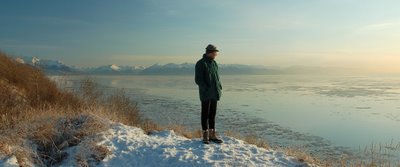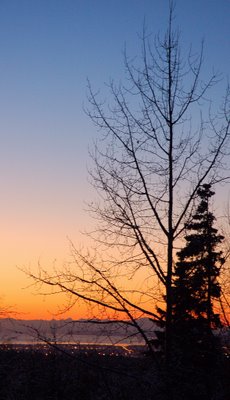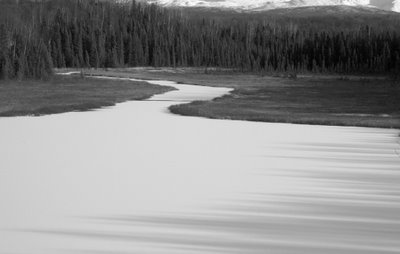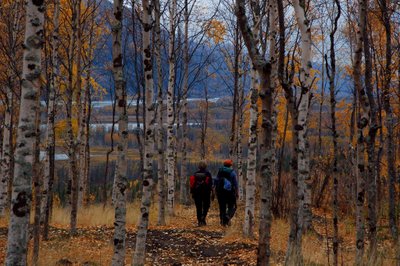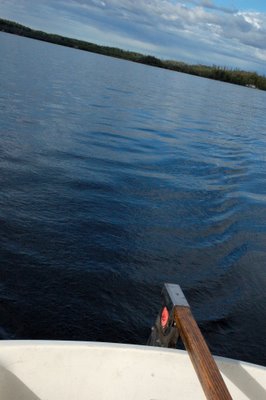
On Friday we left work at noon for our annual pilgrimage to the Alaska State Fair in Palmer, Alaska. Many people probably think we're a bit nuts about the fair. We go every year, despite the fact that we don't have children to take. And we don't go on any rides. We don't know when we'd find the time. It takes us 6 - 7 hours to cover just the "basics," as we see it, of the fair.
We usually show up hungry for lunch. We have already reviewed the food vendors list in the program that came out in the newspaper earlier in the week, and we have our favorite food booths, too, so with a minimal amount of browsing, we head to a booth to buy lunch. This year we started with gourmet tamales. With our appetites sated for a while, we pull out the events schedule and highlight the shows we want to see. A small corral usually features some trick dog show featuring pound puppies. We always see that. The animal barn sometimes has some interesting presentations. One year the Milking Parlor was hosting a display of skunks. We really wanted to see a skunk get milked (but hoped to get a seat at the back of the bleachers). We were more than a little disappointed when it turned out that the skunk was not being milked and was a very shy, old albino skunk who didn't really want to come out of its kennel.
Once we get to the animal barn, we look at all the goats, cows, sheeps, and pigs and their offspring. The baby piglets are always a highlight. Sometimes they're only days old. From the large livestock we move into the rabbit, covey, and bird area. We look at every bunny.
Every bunny. One of us is obsessed with bunnies. There's also a morbid fascination in reading the judge's comments about the bunnies. Breeds have different categories. It's hard to know whether to react happily or mournfully when a "meat" breed gets a comment about 'not enough fat.'
Just beyond the small animals are the bees. Have you ever talked with a bee keeper? Talk about being obsessed with a hobby. We spent almost an hour one year learning about bees from the volunteer in that area.
And then we get to another highlight of the fair -- the big vegetables. This year local farmers and gardeners set world records for kohlrabi and a couple of other vegetables. The winning vegetables and runners-up are displayed on a stage at one end of the room. The crowd in front can be quite dense and generally unmoving. People look at every cauliflower head, read the weight of each beet or carrot, and have their pictures taken with the pumpkins. At 6:00 the Cabbage Weigh-off began. The largest cabbage, at 79 pounds, was grown by an 11-year-old girl. She comes from a long line of large vegetable growers and won last year, too. Contestants name their cabbages and write poems for the contest.
The fair also hires buskers who perform around the grounds. The juggler was not only talented with knives and bowling pins, but incredibly funny. We went to two of his shows and were happily surprised to find that he did a completely different routine, juggling and jokes, both times.
Between all the shows, we walk by all the booths. We usually look at the pottery and wood working tents. Paul looks forward to the political oddballs who say that drivers licenses are unconstitutional and that the state of Alaska doesn't really exist. A new booth this year was promoting one very popular idea here -- www. endalaskadaylightsavings.com. We watch a round or two of the Rat Race, where a gerbil is trying to get down a hole on a large roulette wheel. It's a fundraiser for some local charity.
Like most state fairs, the Alaska one has exhibit halls for all things agricultural and homey. Every year we walk through the Future Farmers of America hall, often learning things I never knew, from raising livestock to the bad effects of meth. Next is the building with the baked, canned, and brewed products (but no tasting!). Then the arts building, with wood workers and quilters practicing their crafts, and a show every hour of the most incredible quilts. The final section of the building contains hundreds of photos and paintings entered in contests. Every kid gets ribbon.
All of this sightseeing and learning can be tiring and create quite an appetite. Sometime during the afternoon, we get an ice cream cone and later a roasted corn ear. We go to the birch syrup industry shack to load up on birch syrup, caramels, blueberry sauce, and mustard made with birch syrup. For dinner this year we had scallops wrapped in bacon on a skewer and crab cakes.
We ended the day watching the sun set over the Chugack mountains while listening to Pele Juju, a women's band from San Francisco, in the amphitheater.







